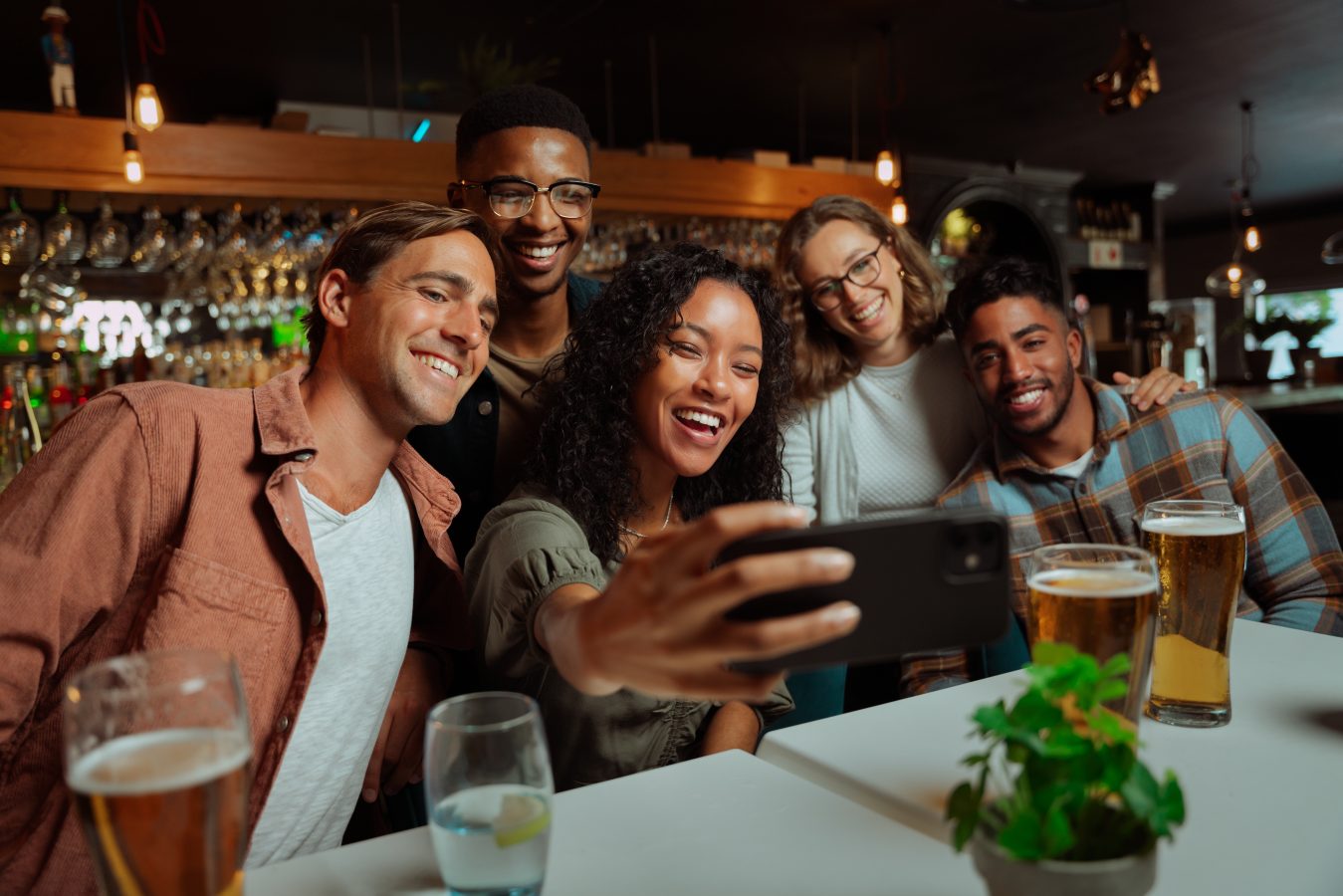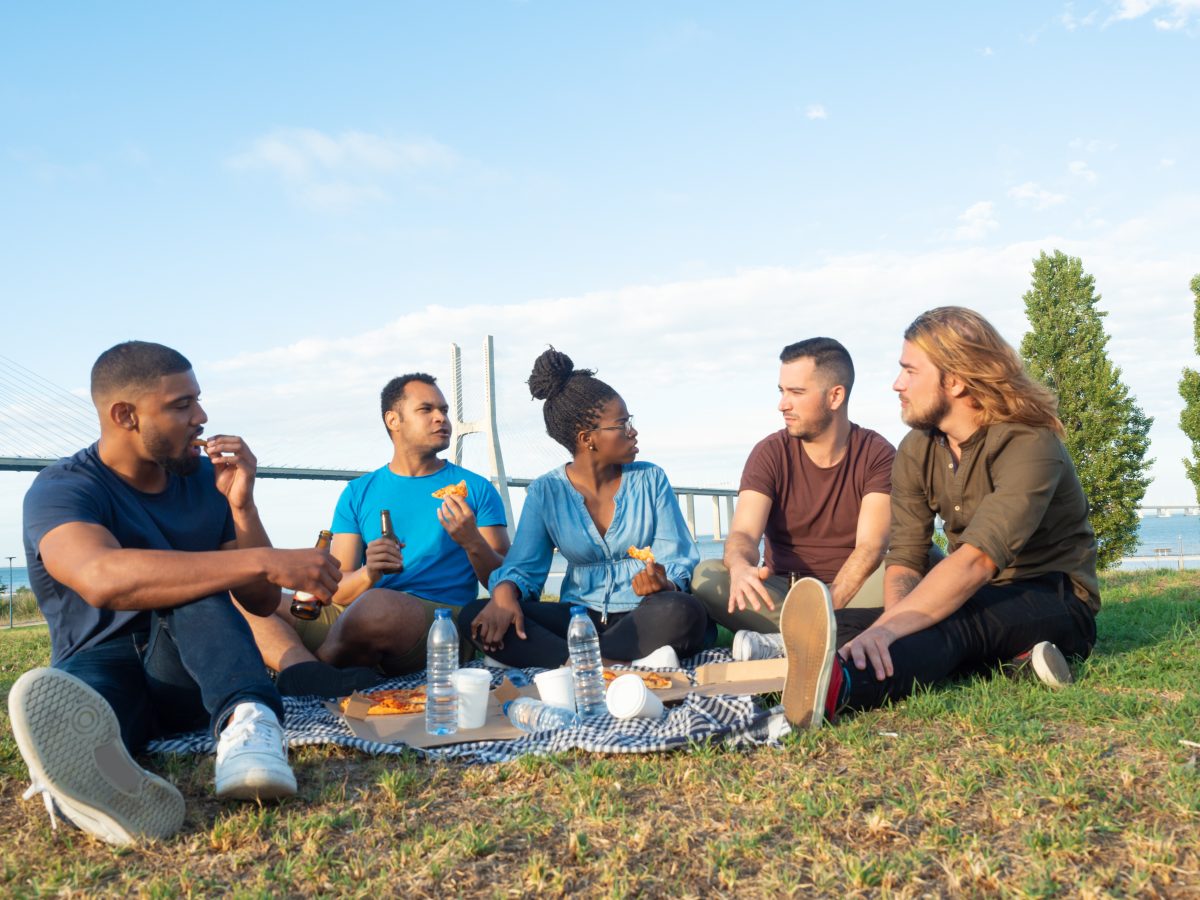Indian students, like any other international students, can experience cultural immersion by actively engaging with the local culture and community of the country they are studying in. Here are some tips on how Indian students can achieve cultural immersion:

Day-to-day life in a new culture
1. Learn the local language
Learning the local language can be a game-changer for Indian students seeking authentic cultural immersion experiences. When you master the native tongue, you break down communication barriers, paving the way for more profound connections with locals. This linguistic proficiency opens doors to a deeper understanding of traditions, customs, and values, facilitating a genuine sense of cultural immersion. In essence, speaking the language is like unlocking the gateway to a richer, more meaningful journey of cultural exploration, allowing Indian students to fully embrace the essence of cultural immersion.
2. Stay with a host family
When it comes to cultural immersion, one of the most impactful experiences for Indian students is staying with a host family. This unique opportunity goes beyond language acquisition and deepens cultural understanding. Living with a local family allows students to witness the daily rhythms, traditions, and customs of the host country firsthand. From sharing meals to participating in local festivities, the immersive environment fosters a genuine connection with the culture, enabling Indian students to fully absorb its essence. In essence, choosing to stay with a host family is the key to unlocking an enriching journey of cultural immersion, where students become an integral part of the community and gain a profound appreciation for their host culture.
See also: Essential student travel safety tips
3. Make local friends
In the pursuit of cultural immersion, forging friendships with locals emerges as a paramount strategy for Indian students. These connections transcend textbooks and guided tours, offering a more profound understanding of the host culture. By engaging with native friends, students gain invaluable insights into the customs, traditions, and nuances that shape the local way of life. These authentic relationships enable Indian students to partake in everyday experiences, from attending local events to savoring authentic cuisine, creating a genuine sense of cultural immersion. In essence, making local friends is the bridge that allows students to connect with the heart and soul of their host culture, enhancing their journey of cultural immersion.
Cultural immersion is not merely a concept; it’s an experience that unfolds through human connections. By making local friends, students not only access a treasure trove of cultural insights but also cultivate lifelong relationships. These friendships transcend borders and offer a profound appreciation for diversity, enriching both personal growth and the overall cultural immersion experience.

Travels and experiences of a new culture
4. Explore the local cuisine
Exploring the local cuisine is a delectable avenue for Indian students seeking to dive deep into the world of cultural immersion. Food is not just sustenance; it’s a reflection of a culture’s history, traditions, and creativity. By savoring the local dishes, Indian students can embark on a sensory journey that connects them to the heart of the host culture. From street food stalls to traditional restaurants, each culinary adventure unveils a new layer of cultural understanding, allowing students to engage with locals, share stories, and experience the authenticity of their surroundings.
Moreover, embracing the local cuisine promotes a sense of belonging and camaraderie. Breaking bread with locals fosters meaningful connections and often leads to spontaneous conversations and shared experiences. This culinary exploration not only tantalizes the taste buds but also enriches the cultural immersion process, enabling Indian students to appreciate the diversity of traditions and flavors that make up their host country’s unique identity. In essence, exploring local cuisine is a mouthwatering gateway to cultural immersion that leaves a lasting impression on students, as it feeds both the body and the soul, creating memories to savor long after their academic journey concludes.
5. Travel within the country
For anyone seeking cultural immersion, traveling within the host country is indispensable. It offers a direct avenue to explore diverse regions, traditions, and lifestyles, going beyond classroom learning. Each destination holds a unique cultural tapestry, providing opportunities to connect with locals, share stories, and appreciate the country’s diversity. Travel not only broadens horizons but also fosters a deeper understanding of traditions, making it an essential passport to cultural immersion, allowing students to create lifelong memories while becoming an integral part of the host culture.
See also: How to get cheap flights to India
6. Engage in cultural activites
Engaging in cultural activities is a pivotal strategy for Indian students aspiring to achieve profound cultural immersion. These activities provide an authentic window into the rich tapestry of traditions, art, and heritage of their host country. Whether it’s attending local festivals, art exhibitions, music concerts, or theater performances, active participation offers firsthand experiences that transcend textbooks and lectures. It fosters a deeper connection with the host culture, allowing students to appreciate its history and values in a tangible way.
Furthermore, cultural activities often serve as a common ground for interaction with locals and fellow international students, creating opportunities for meaningful connections and shared experiences. In essence, immersing oneself in cultural activities is akin to stepping into the heart and soul of the host culture, offering Indian students an enriching and unforgettable journey of cultural immersion that leaves a lasting impact on their personal and academic growth.

Education is the key to cultural immersion
7. Join student organizations
For Indian students seeking a profound cultural immersion experience, enrolling in student organizations proves to be an essential avenue. These organizations serve as vibrant hubs where cultures intersect, creating opportunities to connect with local and international peers who share common interests. By actively participating in these groups, students not only gain exposure to diverse perspectives but also immerse themselves in cultural exchange, moving beyond conventional classroom learning. These interactions cultivate meaningful friendships, enabling students to explore the host country’s traditions, customs, and values on a personal level. In essence, student organizations are a dynamic conduit to cultural immersion, offering Indian students the chance to forge enduring connections, embrace fresh experiences, and deepen their appreciation of the host culture in an immersive and enriching manner.
8. Attend cultural workshops and classes
Participating in cultural workshops and classes is a pivotal strategy for Indian students seeking to enhance their cultural immersion experience. These specialized learning environments provide an interactive platform to delve deep into the traditions, art forms, and history of their host country. Attending these workshops allows students to actively engage with local experts and enthusiasts, fostering a deeper understanding of the host culture’s intricacies. Whether it’s mastering traditional art, cuisine, or dance, these hands-on experiences offer a tangible connection to the culture, creating opportunities for authentic cross-cultural interactions. In essence, cultural workshops and classes serve as a transformative bridge to cultural immersion, enabling Indian students to gain profound insights, develop new skills, and create lasting memories of their academic journey.
Finding cultural workshops or classes to attend is a rewarding endeavor that can be achieved through various means. Firstly, individuals can check with local community centers, cultural organizations, or universities, as they often host workshops and classes that cater to diverse interests. Online resources, such as social media platforms, event listing websites, and community forums, are also valuable tools for discovering upcoming cultural events. Additionally, contacting local cultural centers, museums, or libraries can yield information about scheduled workshops and classes. Lastly, word of mouth can be influential in uncovering hidden gems, so networking with individuals who share your cultural interests or asking for recommendations from friends and acquaintances can lead to exciting cultural immersion opportunities.
9. Read and study local history and literature
Delving into the local history and literature is an indispensable aspect of cultural immersion for Indian students. By engaging with the narratives and chronicles of the host country, students gain profound insights into its historical journey, values, and identity. These literary and historical treasures serve as windows into the collective consciousness of the culture, allowing students to appreciate its evolution and unique perspectives.
Studying local history and literature not only enriches academic pursuits but also fosters a deeper connection with the culture. It enables Indian students to engage in meaningful conversations with locals, as well as their peers, about the cultural context and heritage, ultimately leading to a more holistic and authentic cultural immersion experience. In essence, delving into local history and literature is a potent tool for bridging the gap between Indian students and the host culture, fostering a transformative journey of cultural immersion.
10. Be open-minded and respectful
Maintaining an open-minded and respectful approach is essential for Indian students seeking a meaningful cultural immersion experience. This mindset fosters genuine curiosity and a willingness to embrace diverse customs and traditions, ultimately leading to a deeper appreciation of the host culture. Respectful behavior not only ensures harmonious interactions but also builds trust and authentic connections with locals, enabling students to gain profound insights and a sense of belonging. In essence, an open-minded and respectful attitude is the key to unlocking the full potential of cultural immersion, enriching both personal growth and academic experiences.

Share your new knowledge to spread understanding
11. Document your experiences
Documenting your cultural immersion experiences is a powerful way for Indian students to enhance their journey. Through journals, photos, or blogs, documenting allows you to reflect on and preserve memories, fostering a deeper connection with the host culture. It enables you to capture nuances, insights, and personal growth that may otherwise fade with time. Moreover, sharing your documented experiences with others, either through storytelling or social media, not only educates and inspires but also contributes to cross-cultural understanding. In essence, documenting your cultural immersion is a valuable tool that not only enriches your personal journey but also spreads the essence of cultural immersion to a broader audience, promoting mutual respect and appreciation.
Some examples of where you might document your experiences include:
- Social media: create a traveling page unique from your everyday account that you can use as a digital diary documenting where you’ve gone, what you did, how you felt, and what you gained from the experience
- Blog: start your own blog account or consider sending a submission to your favorite online blog to see if they would be interested in publishing your thoughts and experiences
- In writing: buy a small paper journal that you can carry along with you that way you can be documenting your thoughts and day-to-day activities as you go and you don’t have to worry about forgetting all the details when you want to talk about it later
- In photo and video: if you aren’t much of the posting type, you can still take content that you can use to reflect later on your travels and reminisce or can be used while you share stories about your experiences with friends and family
12. Share your culture
Sharing your own cultural background while traveling as an Indian student can be a powerful catalyst for cultural immersion. It creates a dynamic exchange of ideas, customs, and traditions, fostering a deeper understanding between you and the local community. By sharing your heritage, you contribute to a richer tapestry of cultural diversity, enriching your own experiences and those of the people you meet. This two-way cultural exchange not only builds bridges of mutual respect but also creates lasting connections and memorable interactions that enhance the overall journey of cultural immersion. In essence, sharing your cultural heritage is an invaluable tool that enables Indian students to actively engage with the host culture, leaving a positive and lasting impact on their travel experience.
For Indian students, embracing cultural immersion while traveling is a transformative and enriching experience. It enables them to not only gain a deeper understanding of the host culture but also broadens their horizons and enriches their personal growth. To achieve cultural immersion, students can engage in a variety of activities, including learning the local language, exploring regional cuisine, joining student organizations, and participating in cultural workshops or classes. Staying with host families, making local friends, and documenting their experiences are additional ways to foster meaningful connections and a profound appreciation for diverse cultures. By actively participating in these immersive experiences, Indian students can fully absorb the essence of the host culture and create lasting memories, enriching both their educational journey and their broader perspectives on the world.


